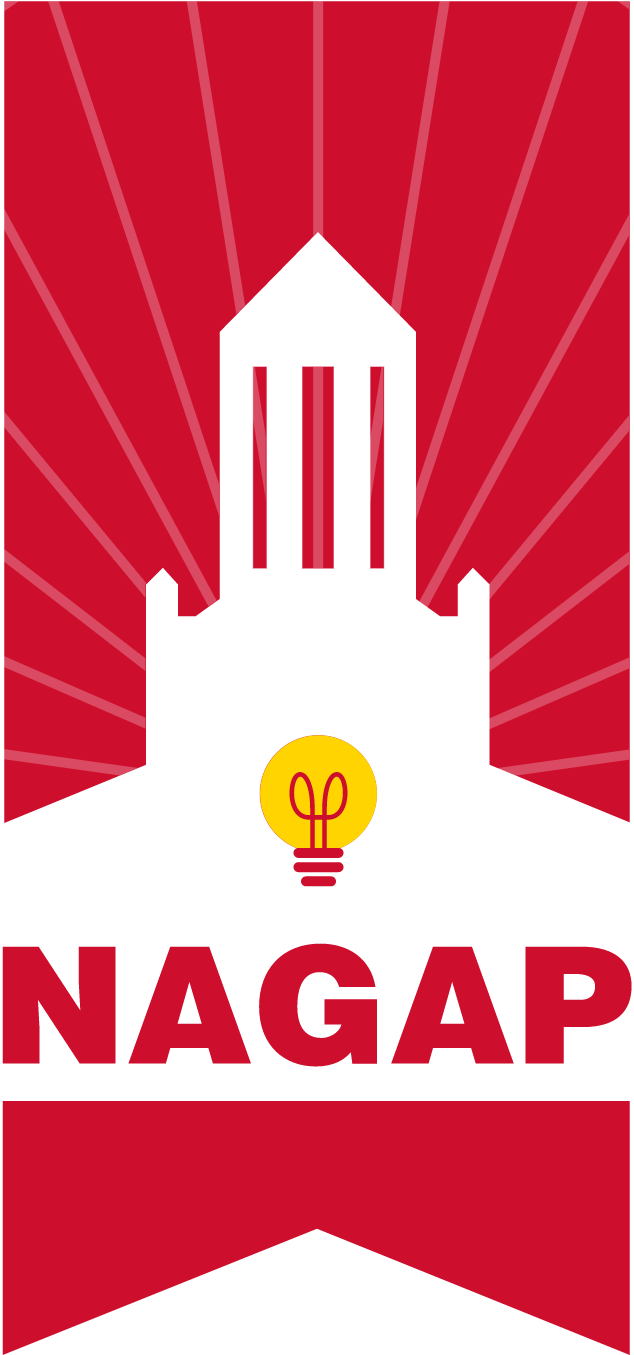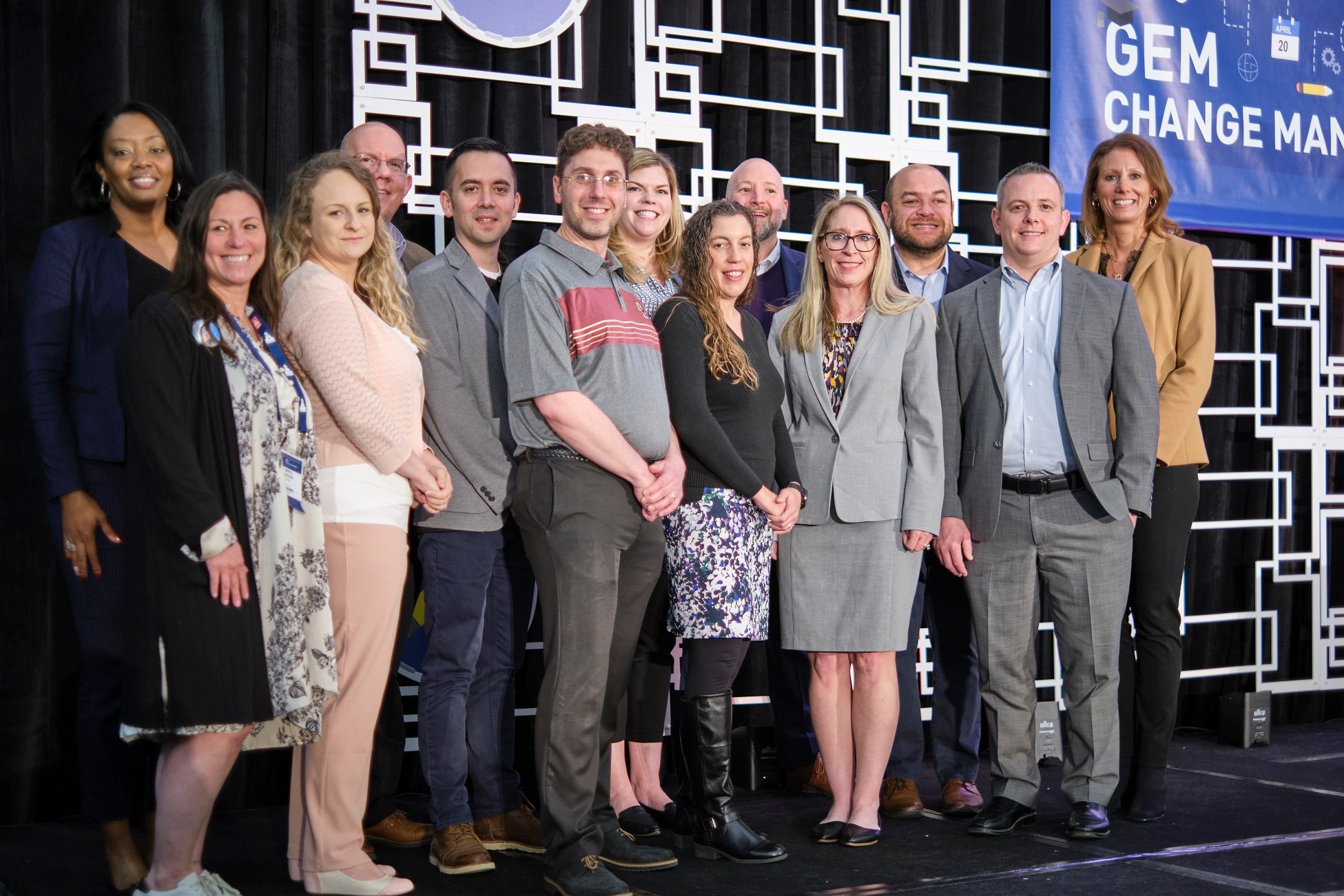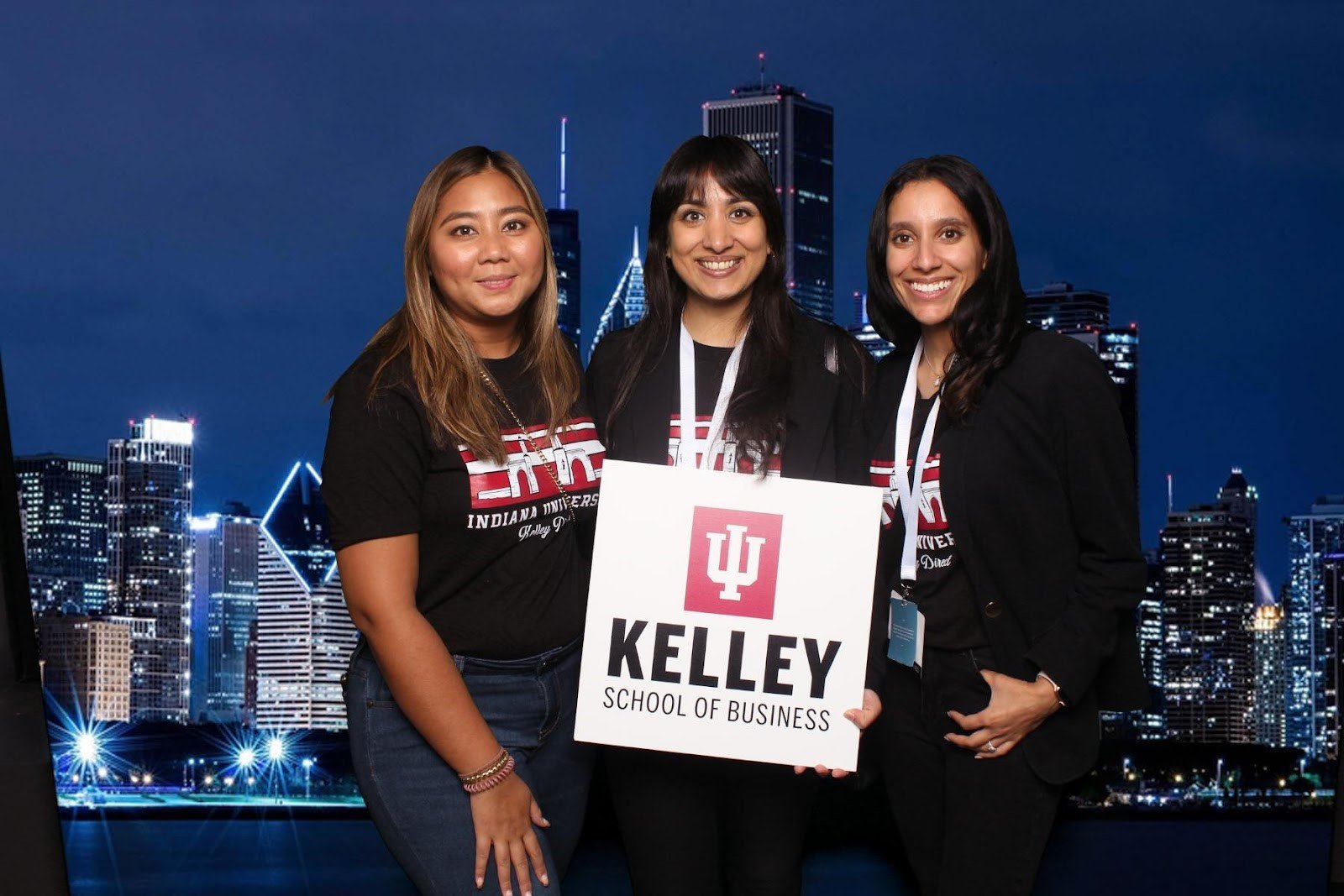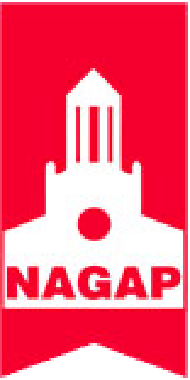Serving online students requires a team approach that is intentional and collaborative.
In a physical learning environment, the advising office is separate from the classroom, the help desk, and admissions. But in an online space, functions blend together—an advisor might field a technical question, and faculty may receive enrollment questions.
Therefore, all partners in online learning should prioritize student engagement in order to consistently communicate that students are the program’s priority. In online education, “Student Services” is not limited to the advising office but extends to all aspects of the student experience.
My academic unit educates working engineers completing professional graduate programs online. We have a student services team, but our work in support of the student experience extends well beyond those of us with “advisor” in our titles.
“The student experience guides the work of our entire team,” said Heather Smith, Director of Graduate Programs for Interdisciplinary Professional Programs.
Together with Graduate Advisors, our Enrollment Coaches, Learning Design Specialists, Technology Support, and faculty all intentionally communicate to our online students that they are valued.
In this post, I will share ideas about how our full Credit Programs Team—not just advisors—prioritizes the student experience through the student lifecycle. My goal is to share ideas and spark creative new practices for your team and to encourage teams to make “student services” less of a dedicated staff role and more of a team value.
Personal Support Throughout the Student Lifecycle
Admissions
My programs use a “white glove” treatment with students, and that individual attention starts before they even submit an application. Our Enrollment Coach reaches out to inquiries with an individual phone call.
“Beginning the conversation with a phone call allows plenty of opportunities for building rapport with prospective students, and I can address all their questions right away,” said Michelle Gullickson, Enrollment Coach.
Investing in personal attention at this stage pays connection dividends throughout the student’s time with us. A recent Engineering Management applicant wrote, “I look forward to the rest of the process and appreciate your continued communication and support.”
During the application process, Gullickson continues her relationship-building: “I’ll check in with students throughout their application process, and they are very grateful! Having this sustained engagement allows me to get to know an applicant better and shows that we are truly committed to supporting adult, online learners.”
Next, we hold a phone or video interview with each applicant and find that this goes a long way towards communicating that we care about students as individuals. (It also provides a lot of information beyond what is on their application, which our marketing team loves.)
The most fun phone call is the “Congratulations, you’re admitted!” call that Graduate Advisors make to successful applicants. In this call, we share our excitement with the student and communicate that we are happy they are joining our community of learners.
Onboarding
We offer both group and individual onboarding opportunities. The group onboarding is a welcome webinar, where students meet each other and learn about program content. We introduce them to the UW-Madison Badger Family, stress that they are just as much a part of Badger Nation as residential students, and ensure they know our beloved mascot Bucky Badger.
Individual onboarding is a meeting with Director Smith to create the student’s Plan of Study. In that meeting, Smith, in her role as Academic Director, and the student discuss time to completion, appropriate elective and/or transfer courses, and any personal barriers. This meeting creates the student’s roadmap for degree completion and most importantly, a connection between the student and Smith.
“After a planning meeting, I feel connected to the student because I understand their goals for the program,” said Smith.
Onboarding ends with an orientation class, Online Student Learning Orientation (OSLO). Our Learning Design Team created and maintains the self-paced, online class, with help from Graduate Advisors. In the class, introductions from staff and leadership ease barriers between students and staff, and, of course, provide opportunities for the students to virtually meet each other before classes begin. “Our Online Student Learning Orientation creates a space for learners to connect, engage in an authentic online learning experience, and access resources to set them up for success,” said Amanda Renz, Learning Design Technology Manager.
In the Classroom
We encourage student services team members to use the classroom to their advantage and ask faculty if they can pop in for a few minutes at the beginning of key classes to make announcements. This helped me when I had a group of students getting ready to graduate. A little virtual face time was beneficial for the students—and me—because it was an efficient way to reach them, and I could easily answer individual questions that benefited the group.
In the classroom, the learning management system (LMS) can be your friend. Consider creative ways to use your LMS as an engagement/advising tool, such as:
- Posting enrollment announcements within course sites
- Building a Student Advising course that all students are “enrolled in” as a central place to house key dates, resources, and links. This is still an idea phase for our team (future blog topic, perhaps?).
Key Partnerships
Consider all the teams that work with your students; who are your key partners in the student experience? In my unit, our key partners are technology support and faculty. Others could be financial aid, Veteran’s Services, Alumni Relations, etc.
Technical Support
Nothing stops online learning as fast as a technical issue, so I believe our most important partner is Online Technical Support. We have a fabulous team of IT support that is dedicated to our students. We don’t want our students waiting in a queue of undergraduate students, so we have our own (amazing) team. They respect that questions come in at all hours and respond very quickly.
Faculty
We help faculty help our students by telling them what types of questions to direct to us. We want faculty to focus on their own teaching, not on doubling as advisors, but they can support the student experience outside the classroom by referring to other staff quickly and appropriately. Our faculty love it when I tell them that if they get any questions about enrollment, permissions, or deadlines, they don't need to try to find the answer and can just forward the question to me immediately. I know students are getting the right information, faculty know they don’t have to know everything, and most importantly, students see us working together to best address their needs.
Collaboration from key program partners ensures that students receive a student-centered learning experience at every step of their program. Advisors play a key but not complete role in supporting student success. It takes a department—not a single role—to deliver student-centered online programs.
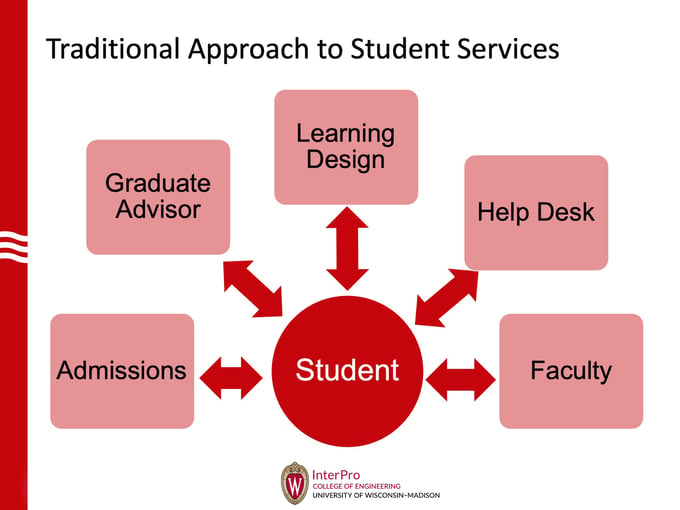
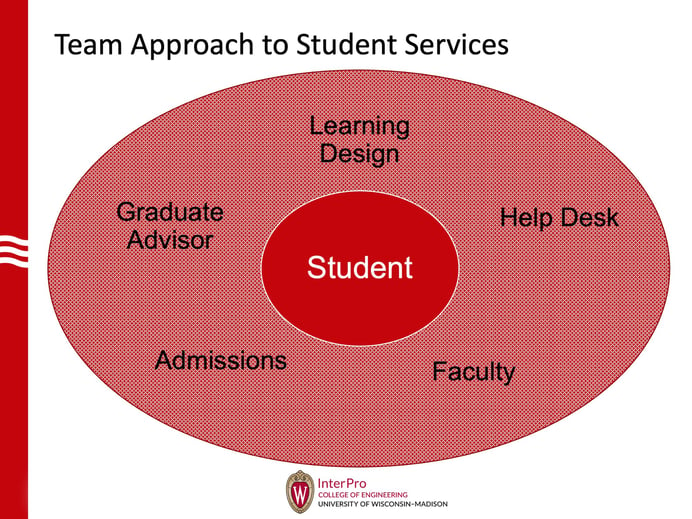
.jpg)
About Daryl Harrison
Daryl Harrison is a Graduate Advisor and leads student services for online graduate programs in Engineering Management. She supports all aspects of the student life cycle, from recruitment to commencement and everything in between. She has served graduate students in the University of Wisconsin—Madison’s College of Engineering for the last 10 years, including 8 years with the Interdisciplinary Professional Programs unit. Daryl has numerous degrees in art history, but her professional path has always been in higher education. She holds bachelor and master’s degrees in Art History, a graduate certificate in American Art, and a professional certificate in Technical Leadership. Learning online can be challenging, and Daryl holds the utmost respect for students who balance the demands of graduate education, professional responsibilities, and personal commitments. She loves talking to students at every phase of their academic journey. Drop her a line!
